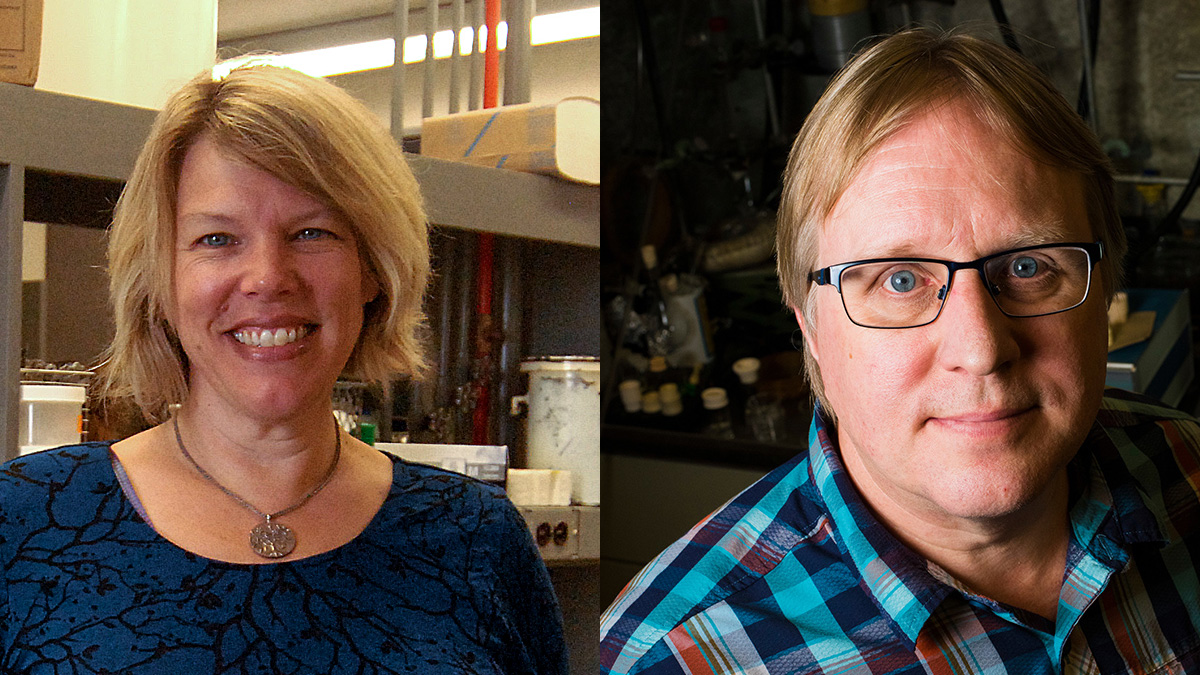 Joe Zoyall, John Ulan
Joe Zoyall, John UlanUniversity of Alberta professors Steven Bergens and Lisa Stein are working to turn greenhouse gases into clean fuels as part of the university’s new Future Energy Systems initiative — a $75 million, seven-year research program funded by the Canadian government.
The initiative will support more than 40 projects aimed at developing new energy technologies that will cut down on greenhouse gas production, reduce dependence on fossil fuels, and drive Canada towards a low net-carbon economy. Bergens and Stein are each targeting a different greenhouse gas problem in their research.
“It’s an astonishing amount of money,” said Bergens, a chemistry professor. “I think it really indicates how serious the government is about fighting climate change.”
Bergen’s lab wants to bring Canada’s carbon footprint to zero by recycling carbon dioxide — the most significant and long-lived greenhouse gas — into liquid fuels. Carbon dioxide is very chemically stable, Bergens explained, it doesn’t like to react with other molecules. But by exciting it with energy from sunlight, researchers can force it to react with other molecules such as water, to create ethanol and other simple fuels.
Canada’s oil sands contribute almost 10 per cent of Canada’s carbon dioxide emissions, much of which comes from purifying crude oils, which generates carbon dioxide as a waste product. Bergen’s team wants to merge his technology with Alberta’s existing oil industry to bring down the province’s carbon dioxide output.
“If we take the carbon dioxide at those sources and turn it into something else, we can make the petroleum industry a lot cleaner,” Bergens said.
On the other side of campus, biology professor Lisa Stein is tackling a different greenhouse gas — methane. It’s not as abundant as carbon dioxide, she explained, but it causes a greenhouse gas effect 300 times as strong on a molecule by molecule basis.
Large amounts of methane are produced from industries such as oil refineries, wastewater treatment plants and paper mills. But what others see as a waste product, Stein sees an untapped opportunity. Her team is working to engineer a bioreactor that contains methane-eating bacteria. These microbes use methane as their energy source, producing alcohols as a byproduct. The alcohol can then be collected and used to synthesize other compounds such as fuels or plastics.
“That way we’re getting something out of it, as oppose to having it directly polluting the environment,” Stein explained. “Our attitude is that if you can take a waste product and even get a modicum of value out of it, it’s worth doing.”
The two teams are working in collaboration with many other labs across campus to revolutionize the Canadian energy sector across the next seven years. By working alongside policy makers and industry experts, the researchers can tailor the science for industrial use right from the start.
“There’s not going to be only one solution to climate change,” Bergens said. “But one of the great things about the Future Energy Systems initiative is that it’s built around teamwork.”




